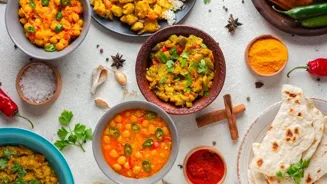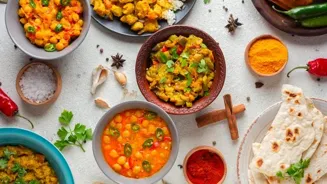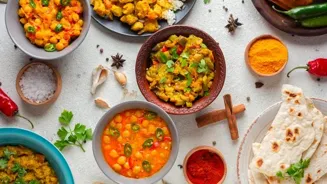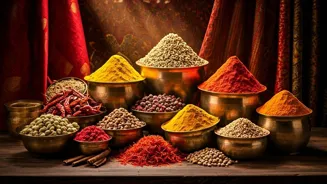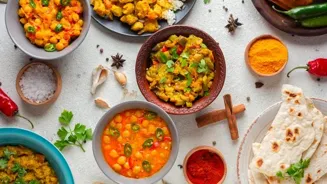Unleash the Flavors: Crafting Homemade Indian Spice Blends
Dive into the world of Indian spices with a guide on creating your own aromatic blends
India, the land of vibrant colours and diverse cultures,
is also renowned for its aromatic and flavourful cuisine. At the heart of Indian cooking lies a treasure trove of spices, meticulously blended to create unique and tantalizing flavour profiles.
While ready-made spice mixes are readily available in the market, nothing quite compares to the satisfaction of crafting your very own blends, tailored to your specific taste preferences.
This comprehensive guide will walk you through the basics of Indian spices, their individual characteristics, and how to combine them to create authentic and delicious spice blends at home.
So, ditch those store-bought packets and embark on a flavourful journey into the world of homemade Indian spice blends!
Understanding the Spice Rack: A Primer on Essential Indian Spices
Before diving into the art of blending, it's crucial to familiarize yourself with the key players in the Indian spice rack. Each spice possesses a unique flavour profile and contributes distinct characteristics to the final blend. Some essential spices to have on hand include:
Turmeric
This vibrant yellow spice, derived from the turmeric root, is prized for its earthy flavour, vibrant colour, and numerous health benefits.
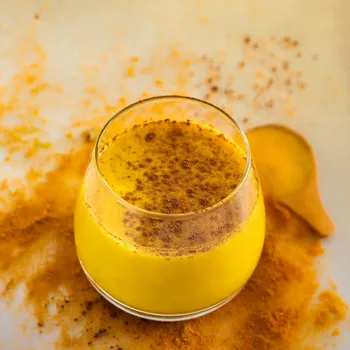
Cumin
Cumin seeds offer a warm, earthy, and slightly bitter flavour. They are available whole or ground and are a staple in many Indian dishes.
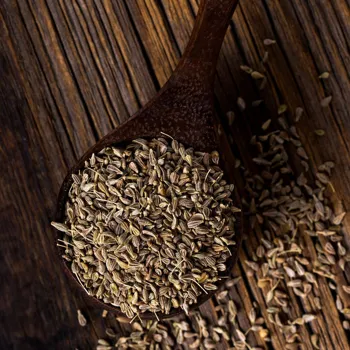
Coriander
Coriander seeds provide a citrusy and slightly sweet flavour. They are often used in conjunction with cumin to create a balanced and aromatic base for many spice blends.
Chilli Powder
Chilli powder adds heat and depth to dishes. Different varieties of chillies offer varying levels of spiciness, so choose according to your preference.
Garam Masala: A blend of warming spices for flavorful dishes
Garam Masala: is a blend of warming spices like cinnamon, cardamom, cloves, and black pepper, adding a fragrant and complex flavour to curries and other dishes.
Mustard Seeds
Mustard seeds come in black, brown, and yellow varieties. They offer a pungent and nutty flavour when tempered in oil.
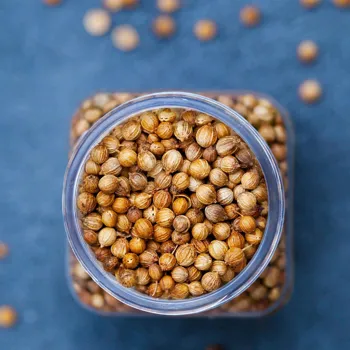
Fenugreek
Fenugreek seeds have a slightly bitter and maple-like flavour. They are often used in small amounts to add depth and complexity to spice blends.
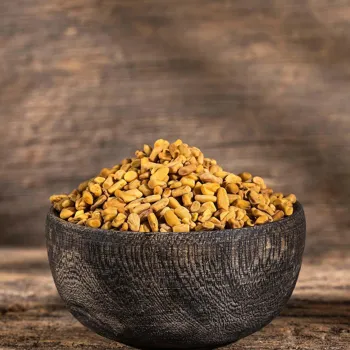
Ginger
Ginger adds a warm, spicy, and slightly pungent flavour to dishes. It can be used fresh, dried, or powdered.
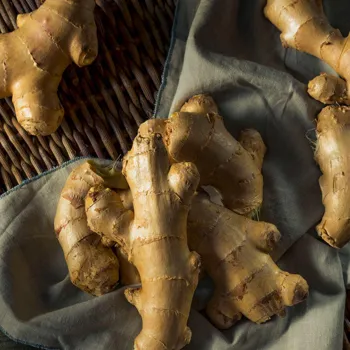
Garlic
Garlic provides a pungent and savoury flavour. It is available fresh, dried, or powdered and is a ubiquitous ingredient in Indian cuisine.
Asafoetida
Asafoetida, also known as hing, has a pungent and umami flavour. It is used in small amounts to enhance the flavour of vegetarian dishes, particularly lentil dishes.
The Building Blocks of Flavour: Balancing Tastes and Aromas
Creating a well-balanced spice blend is an art that requires understanding how different spices interact with one another. The key is to achieve a harmonious balance of flavours, ensuring that no single spice overpowers the others. Consider the following factors when creating your own blends:
Heat
Chilli powder provides the heat element. Adjust the amount according to your preference, using milder varieties for a subtle warmth or hotter varieties for a fiery kick.
Earthy Notes
Spices like turmeric, cumin, and coriander contribute earthy and grounding flavours.
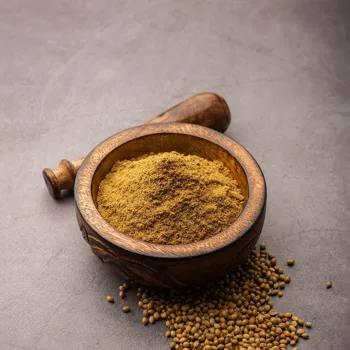
Sweetness
Spices like cinnamon, cardamom, and cloves add a touch of sweetness and warmth.
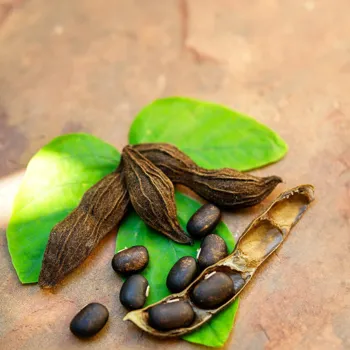
Tanginess
Amchur (dried mango powder) or dried pomegranate seeds can add a tangy and fruity note to spice blends.
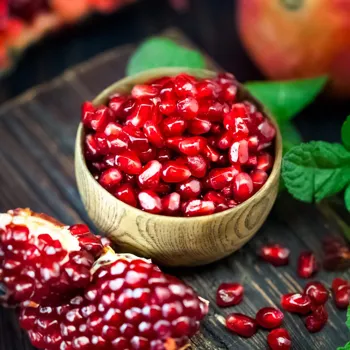
Bitterness
Fenugreek seeds can add a subtle bitter note, which adds complexity and depth to the flavour profile. Use sparingly.
Mastering the Art of Blending: Step-by-Step Guide
Now that you have a basic understanding of Indian spices and flavour balancing, it's time to start blending! Here's a step-by-step guide to help you create your own signature spice blends:
Choose Your Base
Start by selecting a base of one or two dominant spices. Cumin and coriander are common choices for a versatile base.
Add Supporting Flavours
Introduce supporting spices that complement the base. Turmeric, ginger, and garlic are excellent additions for adding depth and complexity. Adjust the quantity depending on your taste.
Incorporate Warmth and Sweetness
Introduce warming spices like cinnamon, cardamom, and cloves to create a balanced and aromatic blend. It enhances the spice blend.
Adjust the Heat
Add chilli powder to achieve your desired level of spiciness. Start with a small amount and gradually increase until you reach the perfect heat level. Remember chilli powder can increase the spiciness exponentially.
Experiment with Tanginess
Add a touch of tanginess with amchur or dried pomegranate seeds to brighten the flavour profile. Experimenting with different quantities can change the overall taste of the blend.
Toast (Optional)
Toasting spices before grinding enhances their flavour and aroma. Be careful not to burn the spices, as this can create a bitter taste. Toast them lightly until fragrant.
Grind
Use a spice grinder or a powerful blender to grind the spices into a fine powder. Make sure the spices are fully cooled down.
Store
Once made and cooled down, put the spice blend in a airtight container. Make sure the container has an airtight seal so that is will be good to use for long time.
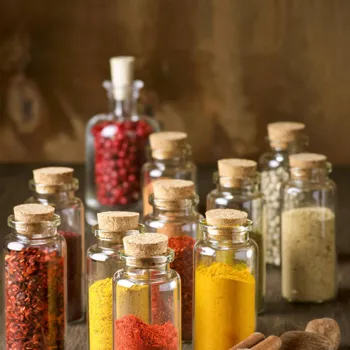
Recipe Ideas: Popular Indian Spice Blends to Try at Home
Here are a few popular Indian spice blend recipes to get you started:
2 tablespoons coriander seeds
1 tablespoon cumin seeds
1 tablespoon black peppercorns
1 inch cinnamon stick, broken into pieces
1 teaspoon cardamom pods
1/2 teaspoon cloves
1/4 teaspoon nutmeg
Sambar Masala:
2 tablespoons coriander seeds
1 tablespoon cumin seeds
1 tablespoon dried red chillies
1 tablespoon chana dal (split chickpeas)
1 tablespoon urad dal (split black lentils)
1 teaspoon fenugreek seeds
1/2 teaspoon mustard seeds
1/4 teaspoon asafoetida
Chana Masala:
2 tablespoons coriander seeds
1 tablespoon cumin seeds
1 teaspoon amchur (dried mango powder)
1 teaspoon dried pomegranate seeds
1 teaspoon garam masala
1/2 teaspoon chilli powder
1/4 teaspoon asafoetida
Storing Your Homemade Spice Blends: Preserving Freshness and Flavour
To ensure that your homemade spice blends retain their freshness and flavour, proper storage is essential. Store them in airtight containers in a cool, dark, and dry place. Avoid exposing them to direct sunlight or heat, as this can degrade their quality. Properly stored spice blends can last for several months.
This will keep it usable for a long time. Also helps with preservations.
Benefits of Making Your Own Spice Blends: Control, Customization, and Freshness
Making your own spice blends offers numerous advantages over buying pre-packaged varieties.
You have complete control over the ingredients, allowing you to customize the flavour profile to your exact preferences. You can also ensure the freshness of your spices, resulting in more vibrant and flavourful dishes. The freedom to mix and match spices to your own liking.
This will produce different variations of food.
Moreover, making your own spice blends is a cost-effective way to stock your pantry with essential flavourings.
Experimenting and Perfecting: The Key to Creating Your Signature Blends
The journey of creating your own Indian spice blends is an ongoing process of experimentation and refinement.
Don't be afraid to try new combinations and adjust the ratios of different spices until you achieve the perfect flavour profile for your palate. Keep a record of your recipes, noting down the ingredients and quantities used, so you can recreate your favourite blends.
With practice and patience, you'll soon be creating unique and delicious spice blends that will elevate your home cooking to new heights.
Do not restrict yourself to this one guide. Find more online guides to add different flavours.
Embrace the world of spices fearlessly, and unleash your inner chef!
